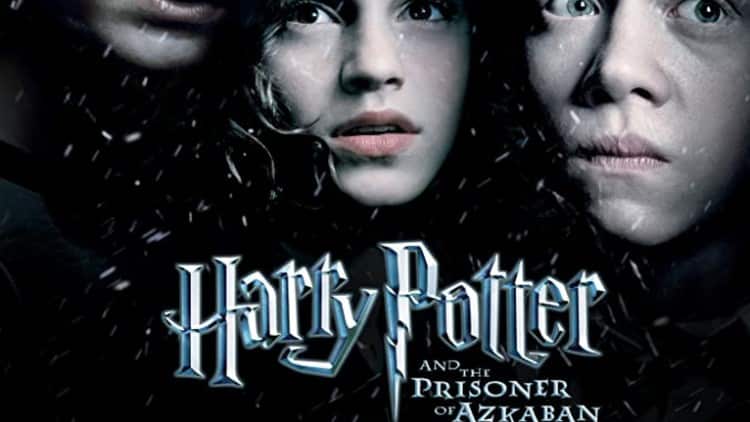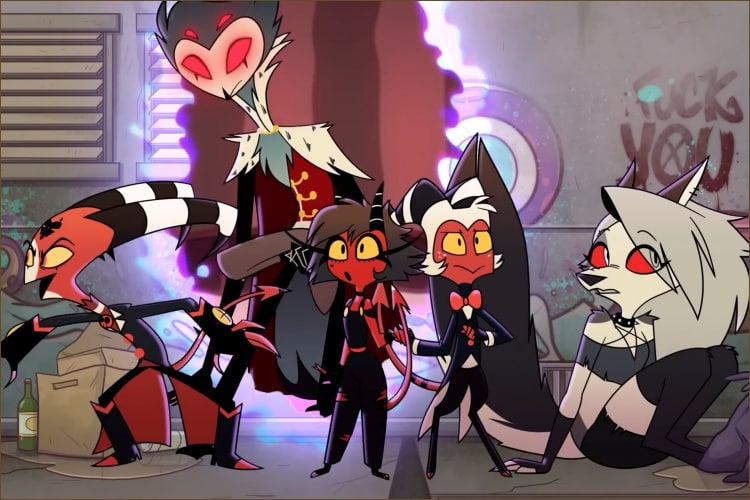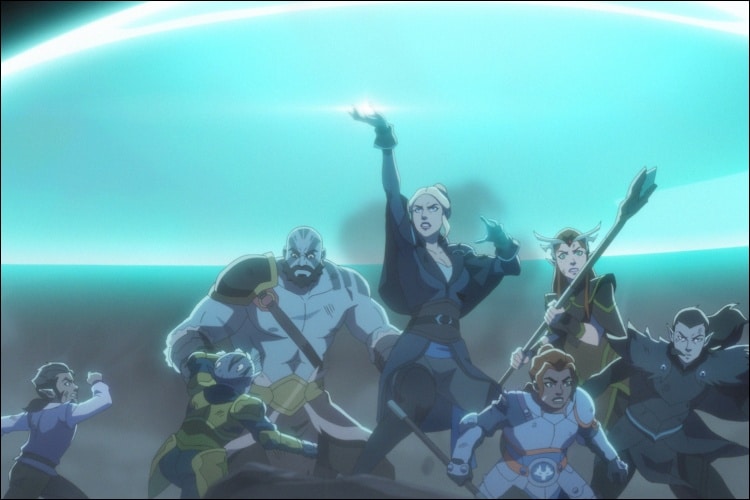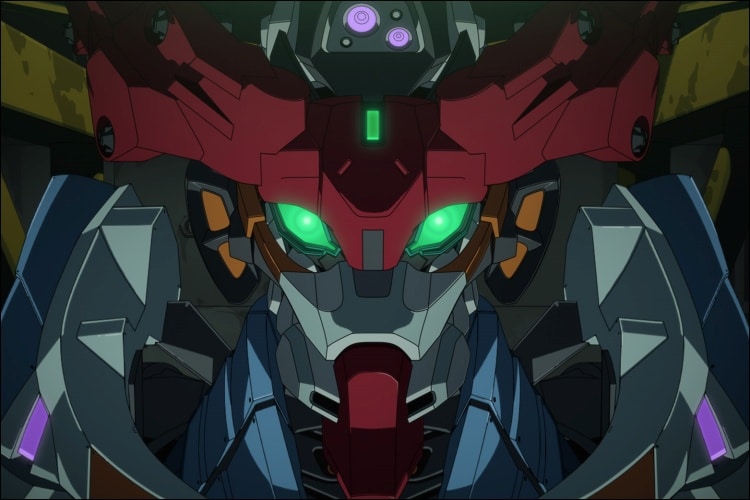The Kiss of the Dementor
Main Cast: Daniel Radcliffe, Emma Watson, Gary Oldman, David Thewlis
Director: Alfonso Cuaron
We pick up the saga of Harry (Daniel Radcliffe) as he ends his summer holidays with his aunt and uncle. As usual, his life is miserable at the Dursley’s, but this time he removes himself rather abruptly and ahead of schedule following a slight magical mishap with an obnoxious relative. As Harry makes his way back to the Hogwarts School of Witchcraft and Wizardry, he learns of the escape of the notorious Sirius Black (Gary Oldman) from Azkaban prison. Seems this Black has some connection to Harry, and might indeed be a danger to him. As a result, there are Dementors floating about, on the lookout for Black. The Dementors are the newest addition to the magical world’s cast of baddies. They are the soul sucking guards from the Azkaban prison, who can make you feel as though there is nothing but misery in the world by their mere presence. They also seem to have a rather more powerful affect on Harry than on the others. So it is under these circumstances that Harry, along with his friends Ron (Rupert Grint) and Hermione (Emma Watson), begin their third year of learning the ins and outs of being a wizard (or witch, as the case may be).
As usual, Harry Potter lives in a fantastical world filled with magic and mystery. This third installment of the series sees some changes in Harry as well as the way he is presented. Harry is growing up. In this his third year at Hogwarts, he is less timid, more at ease and growing more confident in his abilities to use magic. His friendship with Ron and Hermione is like an old comfortable cloak, needing less tending, useful without being distracting. As he becomes a teenager, and a most unusual one at that, Harry also begins to have surges of anger toward those who have turned his world upside down. He no longer trembles with fear at the thought of those who were responsible for the death of his parents so long ago, now he feels righteous fury at being denied the family he deserves. Daniel Radcliffe, though certainly not the finest actor on the planet, has grown nicely along with Harry. With age, he too seems more confident in his role. Gone are most of the cringe worthy moments of “child acting” that we saw in Harry Potter and the Sorcerer’s Stone and Harry Potter and the Chamber of Secrets. His interactions with the adult cast feel comfortable and his delivery no longer lapses into a stilted recitation. The one place that he continues to struggle is in expressing emotion through facial expression. When he is smiling with joy at seeing Ron and Hermione for the first time, that grin is so plastered on his face it looks painful. Grint and Watson both do a fine job; they too seem to be growing into their roles. They aren’t stellar, but they, like Radcliffe, have at this point come to be these characters. Rumblings of replacing the cast with younger actors seems unwise at this point – watching Harry and company grow up is an important part of the books, and mirroring that in the movies is the only reasonable choice. We don’t want to see a different Harry every time; we want to see him become an awkward and angry teen as he fights his demons.
And fight his demons is exactly what Harry is beginning to do. Gone is the simple presence of a mystery to be solved by the boy sleuth, the one front fight against Voldemort (who killed his parents), the struggle with homework and wand tricks. What we get this time is a darker tale, true to the story arc in the books. We are coming into the heart of the story here, with Harry facing his past, as well as trying to avenge that past. He’s fighting against his own misery at the loss of his parents, learning to appreciate the people they were, and facing the multi-faceted evil that seems determined to dog his every year at Hogwarts. This year there is no boy sleuth seeking the answer to a riddle, Harry is confronted with danger whether he wants it or not. It is up to him to face it or flee, and I think we all know what the boy with the lightening scar will choose. The focus of villainy broadens in The Prisoner of Azkaban, making for a more complex and ultimately more satisfying story than in the previous installments.
Credit for the successful execution of the change in tone goes to a change in director. Gone is Chris Columbus from the first two films, with his fun but simple world. In his place we have Alfonso Cuaron, who brings a more foreboding look and feel to Hogwarts, terrifically effective as the story arc takes a darker turn. The castle itself has more detail this time. By more detail I mean exactly that – we get etchings on the walls, cracks in the aging stone, a more complete look at the school including multiple scenes outside the castle walls. The skies are frequently dark and threatening, black clouds scuttling across the screen rather than the blinding sunshine of Columbus’ vision. Hogwarts looks like an ancient English castle that has seen many generations of witches and wizards. This is a marvelous look, more complex and somehow feeling more real. Like this is really a place that holds secrets and mysteries galore, rather than just a plaster replica. The Columbus version was fine for the first two movies with their focus more on setting up the characters and the world, this one is far better for bringing the world into the story at hand. Still fantastic and magical, Hogwarts is now also the home of the past with all that implies for Harry.
Special effects have always had a prominent place in the tales of Harry Potter, obviously. You don’t plunk a cast into a castle full of budding witches and wizards without a few tricks up your sleeve. This time around the effects have the same increased sophistication as the castle itself. The Whomping Willow, which made a prominent appearance at the beginning of Chamber of Secrets, is back. But this time around it is used less and to far greater effect. Rather than being central in just a single scene in which it attempts to beat the daylights out of someone or something, this time the tree is far more sentient, shaking off its leaves as the seasons change, snapping at birds, itself sheltering as many secrets as the rest of the school. The flying scenes are once again fantastic, only this time they don’t wear out their welcome in sequences that go on a little too long. I wouldn’t have even realized that this was the case in the first two films if this one hadn’t done them so much better. We get the dizzying thrill of flying on both broom and creature, yet without any protracted focus on a Quidditch match interfering with the story proper. Perhaps it is because this is a far longer and more complicated tale to tell, but the whole movie seems shed of filler, leaving us with a crisp, tight story that moves along at a brisk clip. Lost are extended scenes of student rivalry and class work, in favor of focus on the story itself. A welcome change, as we’ve seen Quidditch, rivalry and Potions lessons in detail before – we hardly need to see them in each film. There are other bits of special effects wizardry that deserve mention. The whirling trip through a series of clock gears, the creation of Buckbeak, the Hippogriff, the mischief of the Bogart (a creature to be fought in the defense of the dark arts). And then there are the Dementors. These beings lack much physical substance and are free to float around with their tattered rags flapping menacingly behind them. That they are indiscriminate in their attacks makes them all the more frightening. Wonderfully creepy. All of these bits amazed the kids (and the adults), and the effects team deserves great credit for their creation.
The adult actors again take a back seat to the story and the trio of Harry, Ron and Hermione. As it should be. The story isn’t about these characters, they are primarily there to add color and texture to the story. The esteemed actors who play these roles clearly know this and make the most of their brief scenes, giving them as much oomph as they can without stealing time away from the central story. Chief among our adult color this round is Emma Thompson as Professor Trelawney. Trelawney teaches the vague discipline of Divination, and is as gloriously faux-ethereal and obliviously inept as we could ask. Thompson does a fabulous job with Trelawney, behind her enormous glasses. She gets in her funny one-liners without breaking stride with the story, stealing but a few precious moments from the child cast – moments appreciated by both adults and children in the audience. Alan Rickman is back for a few scenes as Severus Snape, the Potions teacher with an obvious dislike for Harry. Rickman is his usual enigmatically nasty self, his Snape having indecipherable motives for nearly everything he does. His is not a large role here, but as usual, his character continues to become increasingly unreadable. Snape is part of the larger story arc, not taking a lot of time in each installment, but continuing to develop in each one.
The largest adult role this time around belongs to David Thewlis as Professor Lupin, new instructor in the Defense Against the Dark Arts. Lupin has his own secrets to keep, but takes Harry under his wing, teaching and protecting the younger wizard as well as filling him in on some of the details of his past. Lupin knew Harry’s parents, and provides us with some of the only extended scenes of exposition about the nature of Harry’s struggle to keep them in his memory and complete his picture of them. Thewlis acquits himself very well, facilitating some of the best acting we’ve seen from Radcliffe to date. Of course we also have a new Headmaster Dumbledore since the death of Richard Harris. Michael Gambon steps into the role, picking it up and doing his best to make it his own. Fortunately, Dumbledore does not have a large presence in this film, the role of mentor to Harry passing to Lupin instead. This gives Gambon a chance to get his feet wet as Dumbledore, establish his own take on the character without the pressure of carrying any large scenes. He does a good job, and will be a fine Dumbledore. He can’t replace Richard Harris, but no one could. To his credit he doesn’t try to mimic the late Harris, rather going for a Dumbledore of his own. It works well.
Harry Potter and The Prisoner of Azkaban is by far the finest film in the series to date, thanks primarily to the direction of Cuaron. He darkens the tone of the film, keeps it moving remarkably well, replaces the childish world of Columbus with one infinitely more visually interesting and subtly detailed and lets the story unfold and the arc play out in this installment. The child actors continue to grow into their roles and the adult actors all know well how to spice up a scene without taking over the film. The movie stays true to both the substance and the tone of the book, something much appreciated by the younger audience members. One ten-year-old girl tells me that her biggest disappointment with the film is that Cuaron will not be back for the fourth installment. They may be children, but they know a quality Potter film when they see one. Kudos to Cuaron for taking on an established franchise and daring to step it up a notch. As I sat there, wide eyed and mesmerized, I did remember the fun of seeing a beloved story come to life. When I actually remembered to glance over at the kids that were there with me, they had the same look of enchantment on their faces that I remember from childhood. Just one more thing that makes me love the film. Harry Potter and the Prisoner of Azkaban is well worth the bucks to see on the big screen, with or without the kids.

Sue reads a lot, writes a lot, edits a lot, and loves a good craft. She was deemed “too picky” to proofread her children’s school papers and wears this as a badge of honor. She is also proud of her aggressively average knitting skills. TV and indie movies are her jam.






Leave a Reply